Wa
Introduction
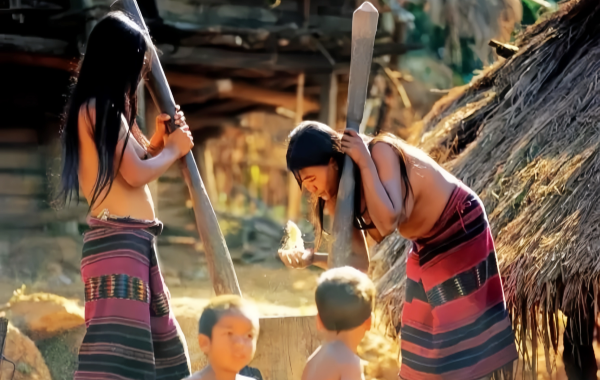
The Wa Nationality is a unique and culturally rich ethnic group in China. With a long - standing history and distinct cultural traditions, the Wa people have their own special way of life that has fascinated scholars and travelers alike. Their cultural heritage is an integral part of China's diverse ethnic mosaic, contributing to the country's cultural richness and complexity.
 History
History
Origin
The ancestors of the Wa people are believed to have lived in the southwestern regions of China since ancient times. Archaeological evidence, such as stone tools and pottery fragments, suggests that they have a long - established presence in the areas they currently inhabit. Over centuries, they gradually developed their own ethnic identity through interactions with neighboring ethnic groups and adaptation to the local environment.
Development
Historically, the Wa people mainly engaged in slash - and - burn agriculture, cultivating crops like rice, maize, and millet in the hilly and mountainous areas. Hunting and gathering were also important supplementary activities, providing additional food sources and materials for daily life. The Wa society had a relatively simple community structure, with the village being the basic unit. Family and clan ties played a crucial role in social organization, and they developed their own set of social norms and customs, which were passed down through oral traditions.
Modern Times
In modern times, with the development of China's border areas and increased interaction with the outside world, the Wa people have undergone significant changes. The government has implemented various policies to promote economic development in Wa - inhabited areas, improving infrastructure such as roads, schools, and medical facilities. Education has been greatly improved, leading to a higher literacy rate among the Wa people. At the same time, efforts have been made to preserve and promote Wa culture, including language, traditional music, dance, and crafts.
 Population
Population
Quantity
As of the latest census data, the Wa population in China is approximately 430,000, making them one of the smaller but culturally distinctive ethnic minorities in the country.
Distribution
The majority of the Wa people live in Yunnan Province, particularly in Cangyuan Wa Autonomous County and Ximeng Wa Autonomous County. These areas are characterized by hilly and mountainous terrain, with dense forests and abundant natural resources. A small number of Wa people have migrated to other parts of China for work or other reasons, contributing to cultural exchange and integration. Additionally, there are Wa communities in neighboring regions of Myanmar, maintaining cultural ties with their counterparts in China.
 Economy
Economy
Traditionally, the Wa economy was based on slash - and - burn agriculture. They cultivated a variety of crops in the hilly terrain, adapting to the local climate and soil conditions. Hunting and gathering were important supplementary activities, providing protein and additional income. The Wa people also had a tradition of bartering, exchanging goods with neighboring ethnic groups.
In modern times, the Wa economy has diversified. Agriculture remains an important sector, but there has been an increase in the cultivation of cash crops such as rubber, tea, and sugarcane. Livestock farming, including the raising of cattle, pigs, and chickens, has also become more common. Tourism has emerged as a growing industry in Wa - inhabited areas, especially in Cangyuan and Ximeng. The unique Wa culture, beautiful natural landscapes, and traditional festivals attract a large number of tourists. Many Wa people are involved in the tourism industry, offering services such as homestays, guiding, and cultural performances. Handicrafts, including wood carving, blacksmithing, and weaving, are also important sources of income for some Wa artisans.
 Culture
Culture
Language and Script
The Wa language belongs to the Wa branch of the Austro - Asiatic language family. It has several dialects, which vary from region to region. In the past, the Wa people did not have a widely - used written script. In recent years, a new Wa script based on the Latin alphabet has been developed and is now being used in education, literature, and cultural transmission among the Wa people.
Religious Beliefs
The Wa people have a complex religious belief system. Animism is prevalent, and they worship a wide range of natural spirits, such as mountain spirits, river spirits, and tree spirits, believing that these spirits have control over natural phenomena and human fortunes. Ancestor worship is also an important part of their religious life, and they hold rituals to honor their ancestors and seek their protection. In addition, some Wa people have converted to Buddhism (Theravada), which was introduced to the area from Myanmar in the past centuries. There are also a small number of Wa people who follow Christianity. Religious activities are often closely related to festivals and important life events.
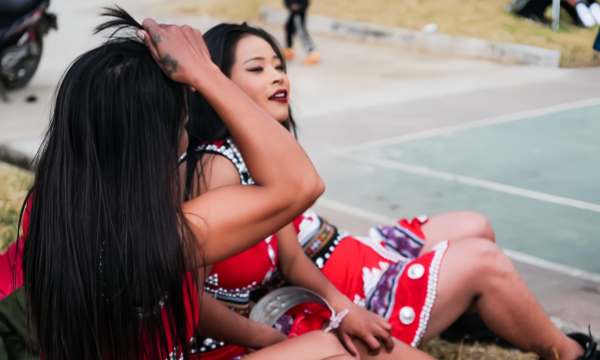 Clothing
Clothing
Traditional Wa clothing is simple yet distinctive. Women's clothing usually consists of a short - sleeved blouse and a long skirt. The blouse is often made of dark - colored cloth, while the skirt may be decorated with colorful stripes or patterns. Women also wear a variety of accessories such as beaded necklaces, bracelets, and earrings, which are often made of natural materials like shells, bones, and seeds. Men's clothing is relatively plain, typically consisting of a short - sleeved shirt and long trousers, often made of coarse cloth. In some special occasions, men may wear traditional hats made of bamboo or straw.
Literature
Wa literature has a rich oral tradition, including folk tales, epics, proverbs, and songs. Folk tales are passed down from generation to generation through oral storytelling, often featuring animals as characters and conveying moral lessons. Epics are long narrative poems that recount the heroic deeds of ancestors or legendary figures, reflecting the history and values of the Wa people. Proverbs are an important part of Wa wisdom, providing concise and insightful expressions of life experiences and social norms. Wa songs cover a wide range of topics, such as love, labor, and nature, and are often sung during festivals, social gatherings, and daily work.
Transportation
In the past, due to the hilly and mountainous terrain of their habitats, the Wa people mainly relied on walking for transportation. In some areas, they used horses or mules to carry heavy loads. In modern times, with the development of infrastructure, motorcycles, cars, and buses have become common means of transportation in Wa - inhabited areas. However, in some remote villages, walking is still an important way of getting around, especially for accessing remote fields and forests.
 Science
Science
Medicine
Traditional Wa medicine has a long history and is based on the use of local herbs and plants. Wa healers, known as "moya," have extensive knowledge of the medicinal properties of various plants and use them to treat a wide range of diseases. Traditional Wa medicine also emphasizes the balance between the body, mind, and the environment, and the use of natural remedies is often accompanied by rituals and prayers. In recent years, there has been growing interest in integrating traditional Wa medicine with modern healthcare systems to provide more comprehensive medical services for the Wa people.
Calendar
The Wa people have their own traditional calendar, which is closely related to agricultural activities and natural phenomena. The calendar is used to determine the best times for planting, harvesting, and other agricultural tasks. It also marks important cultural events and festivals, helping the Wa people to maintain their cultural traditions and sense of time. The traditional calendar is based on observations of the sun, moon, and stars, as well as the growth cycles of plants and the behavior of animals.
 Art
Art
Music
Wa music is characterized by its lively rhythms and unique vocal styles. Folk songs are an important form of Wa music, covering a wide range of topics such as love, labor, and nature. Traditional Wa musical instruments include the "meng" (a kind of drum), "xiao" (a bamboo flute), and various types of stringed instruments. Wa music often expresses the people's emotions and reflects their life experiences and cultural values. During festivals and celebrations, Wa people gather together to sing and play music, creating a lively and festive atmosphere.
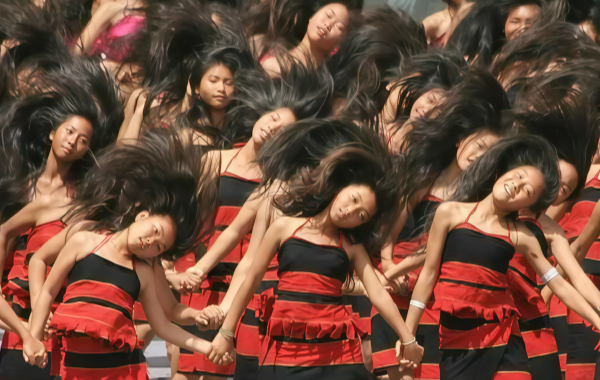 Dance
Dance
Wa dance is energetic and expressive, with movements that are closely related to daily life and work. Traditional Wa dances include the "Wood - Drum Dance," which is a popular dance performed during festivals and social gatherings. In this dance, dancers strike wooden drums with sticks while moving their bodies in a rhythmic and skillful manner, showcasing their cultural heritage and enthusiasm. Other dances imitate the movements of animals or depict scenes from daily life, such as farming, hunting, and fishing. Dancers wear colorful costumes and perform with enthusiasm, bringing people together in a joyful and harmonious way.
Architecture
In the past, the Wa people lived in wooden stilt houses in the hilly and mountainous areas. These houses were usually built on slopes, taking advantage of the terrain for stability and drainage. The houses were divided into several rooms for different purposes, such as living, sleeping, and storing goods. The interior was simply furnished, with fireplaces for cooking and heating. In modern times, with the improvement of living standards, many Wa people have moved into brick - and - concrete houses, but some traditional architectural elements are still preserved in some villages as a symbol of cultural heritage.
Landscape
The Wa - inhabited areas in Yunnan are characterized by beautiful natural scenery, including rolling hills, dense forests, and clear rivers. Cangyuan and Ximeng are known for their unique geographical features and rich biodiversity. The area is home to a wide range of plant and animal species, many of which are endemic to the region. The beautiful natural scenery has inspired Wa artists and poets for generations, and it also serves as an important ecological resource for the development of tourism and other industries.
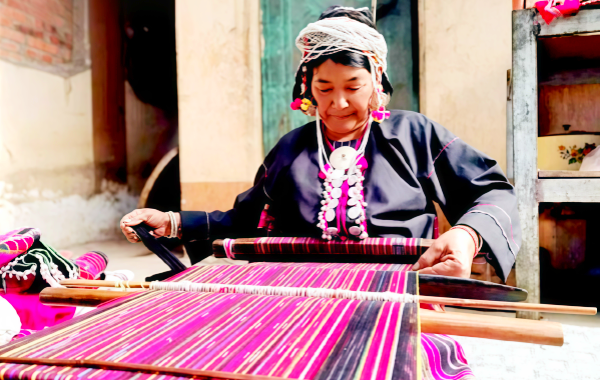 Arts and Crafts
Arts and Crafts
Wa arts and crafts are renowned for their fine workmanship and unique designs. Traditional Wa crafts include wood carving, blacksmithing, and weaving. Wa wood carving is often used to decorate furniture, doors, and windows, featuring intricate patterns and lifelike images of animals and plants. Blacksmithing products include knives, axes, and farming tools, which are known for their durability and sharpness. Weaving products include cloth, bags, and mats, which are often decorated with colorful patterns and designs.
 Custom
Custom
Etiquette
Wa etiquette is based on hospitality, respect, and politeness. When guests arrive at a Wa home, they are usually greeted warmly with a smile and a handshake. The host will offer tea or wine to the guests, and it is customary to accept these offerings as a sign of respect. During meals, guests are often served the best food, and it is polite to praise the host's hospitality. The Wa people also place great importance on greetings, and young people should show proper respect to elders by using formal titles and polite language.
Marriage Customs
Wa marriage customs vary slightly from region to region but generally involve several steps. Marriages are often arranged by the families of the bride and groom, but the consent of the couple is also important. The engagement ceremony is an important step, during which the groom's family presents gifts to the bride's family. The wedding ceremony is a grand event that includes various traditional rituals, such as the bride and groom drinking from the same cup to symbolize their unity, and the exchange of gifts between the two families. The wedding feast is a time for family and friends to gather and celebrate, with music, dancing, and delicious food.
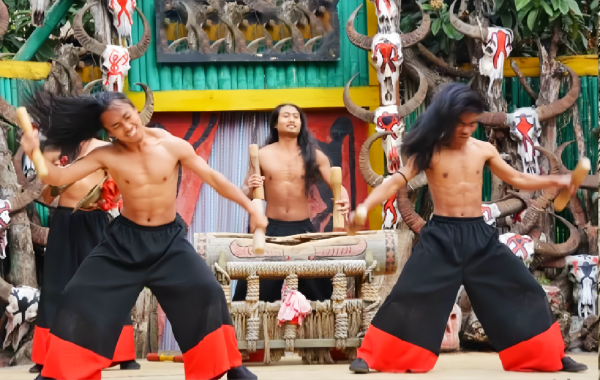 Festivals
Festivals
The Wa people celebrate many important festivals throughout the year. The "New Rice Festival" is one of the most significant, which is held when the new rice is harvested. During the festival, people gather together to offer sacrifices to the gods and ancestors, praying for a good harvest in the coming year. They also sing, dance, and enjoy traditional Wa food. Other festivals include the "Spring Festival," the "Dragon Boat Festival," and the "Mid - Autumn Festival," which are celebrated in a similar way to the Han Chinese but with some unique Wa customs and traditions.
Diet
Wa cuisine is characterized by its simple ingredients and unique flavors. Staple foods include rice, maize, and millet. Common dishes include grilled meat, stewed vegetables, and sour - and - spicy soups. The Wa people have a tradition of using local herbs and spices to flavor their food, giving it a distinct taste. They also like to drink homemade wine, especially during festivals and social gatherings.
Funeral Customs
Wa funeral customs are based on respect for the deceased and the belief in an afterlife. When a person dies, the family will hold a series of funeral rituals, including washing the body, dressing it in new clothes, and placing it in a coffin. Religious leaders or elders will perform prayers and rituals to guide the soul of the deceased to the afterlife. Family and friends will gather to pay their respects and offer condolences, and a funeral feast is held to honor the memory of the deceased. The mourning period varies depending on the relationship with the deceased, and relatives and friends will continue to offer support to the bereaved family during this time.
What Our Clients Say?
Based on 10,000+ traveler reviews











